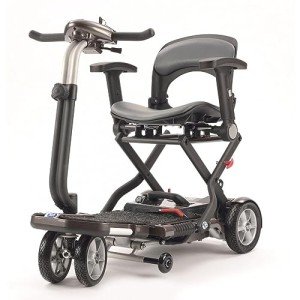Understanding Mobility Aids: Enhancing Independence and Quality of Life
As society continues to age and people significantly seek ways to maintain independence, the demand for mobility aids has actually never been more pertinent. Mobility aids, which encompass a variety of devices designed to assist people with strolling or moving, play a crucial role in promoting mobility, boosting security, and enhancing general lifestyle. lightweight folding electric scooters will explore the various kinds of mobility aids, their benefits, considerations for choice, and answer some frequently asked questions.
Types of Mobility Aids
Different mobility aids are available, each created to deal with particular needs. The following table sums up a few of the most common types of mobility aids and their functions.
| Type of Mobility Aid | Description | Best Suited For | Key Features |
|---|---|---|---|
| Walking canes | A handheld stick offering assistance and balance. | People who require very little help. | Light-weight, portable, adjustable height. |
| Walkers | Four-legged frames offering stability. | Those needing considerable support while walking. | Foldable, some with wheels, added safety functions. |
| Rollators | Wheeled walkers with a seat for resting. | Individuals needing mobility with the choice to rest. | Brakes, baskets for personal products, adjustable height. |
| Wheelchairs | Chairs with wheels for individuals with limited mobility. | Those unable to stroll or needing extensive assistance. | Handbook or powered alternatives, adjustable seating. |
| Scooters | Motorized devices for larger distances. | People with limited endurance but requiring self-reliance. | Various sizes and styles, often transportable. |
| Crutches | Assistance devices positioned under the arms or lower arms. | Individuals recuperating from lower limb injuries. | Adjustable, lightweight, requires upper body strength. |
| Stairlifts | Mechanical devices for moving in between floorings. | Users dealing with challenges in multi-level homes. | Personalized for different staircases, automated. |
Advantages of Mobility Aids
Mobility aids provide a range of advantages that can substantially enhance the lives of people dealing with mobility challenges. Some significant benefits include:
- Increased Independence: Mobility aids empower people to move easily without relying on others for support, consequently enhancing their self-confidence and self-esteem.
- Boosted Safety: Using mobility aids can minimize the risk of falls and injuries, specifically for older adults or those with balance problems.
- Improved Quality of Life: By facilitating mobility, people can participate in social activities, attend events, and enjoy life more completely, contributing to much better emotional and psychological health.
- Rehab Support: After surgery or injury, mobility aids offer required support and stability, assisting in recovery and rehabilitation processes.
- Availability: Many mobility aids are created to be used both inside and outdoors, making sure that people can navigate different environments with ease.
Elements to Consider When Choosing Mobility Aids
Picking the suitable mobility help requires mindful factor to consider of numerous aspects, consisting of:
| Factor | Factors to consider |
|---|---|
| User's Needs | Assess the level of mobility needed; think about whether the user requires short-lived or long-term assistance. |
| Physical Limitations | Examine the user's strength, balance, and coordination to identify the best type of help. |
| Setting | Consider the primary environments where the aid will be used, such as home, outdoors, or specific surfaces. |
| Weight and Portability | Ensure that the chosen gadget is manageable regarding mobility and storage, especially for outside use. |
| Budget plan | Mobility aids come in a range of rates; consider insurance protection and readily available funding alternatives. |
| Adjustability | Choose aids that can be adjusted for height and convenience to accommodate development or changing requirements. |
Frequently Asked Questions About Mobility Aids
1. How do I know if I need a mobility help?
Many elements can signal the need for a mobility aid, such as difficulty walking or stabilizing, tiredness while standing, or a current surgery impacting mobility. Consulting with a health care professional can offer guidance customized to specific needs.
2. What kinds of mobility aids are covered by insurance coverage?
Protection differs between insurers, but most provide options for long lasting medical equipment, which usually consists of wheelchairs, walkers, and some kinds of walking sticks. Inspect with your insurance provider for particular protection information.
3. Can mobility aids be utilized outdoors?
Yes, many modern mobility aids are created for outside usage. Rollators, scooters, and some walkers are equipped with functions for stability and ease of use on numerous surface.
4. How do I maintain my mobility help?
Regular upkeep involves inspecting for any wear and tear, ensuring that parts such as wheels, brakes, and frames are functioning properly, and cleaning the devices as required. Following the producer's standards is crucial for safety.
5. Exists a danger of becoming reliant on mobility aids?
While some users might become reliant on mobility aids, they are developed to promote self-reliance and mobility. Slowly utilizing a mobility help can improve confidence and help maintain physical strength and coordination.
Mobility aids are vital tools that empower people to overcome physical obstacles, promoting independence and enhancing lifestyle. By comprehending the numerous kinds of mobility aids offered, their advantages, and essential aspects for factor to consider, families and caregivers can make informed choices that best meet the requirements of their liked ones. With the right assistance, those with mobility challenges can lead fulfilling and active lives, free to check out the world around them.

